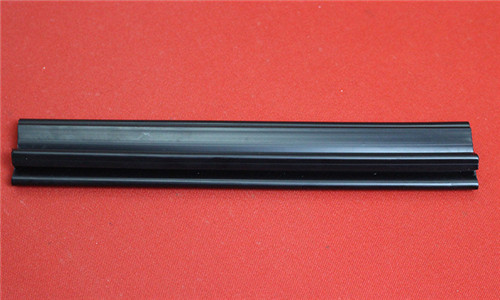
Phone Number :
07 27, 2023

Building protection is a critical aspect of ensuring both the safety and longevity of structures. One key element in this regard is the utilization of anti-collision strips. These innovative strips act as a protective barrier, preventing damage caused by accidental collisions. In this article, we will delve into the significance of anti-collision strips and examine several noteworthy application cases.
Anti-collision strips play a vital role in enhancing the overall safety measures implemented within buildings. By effectively absorbing the impact of collisions, they considerably reduce the risk of injury to occupants. For instance, in hospitals or educational institutions, where foot traffic is high, anti-collision strips can be installed along corridors and stairways to minimize the chances of accidents caused by unintentional collisions.
Additionally, the use of anti-collision strips can prevent damage to emergency exits, ensuring their functionality during critical situations. By protecting these important escape routes, the strips contribute to the prompt evacuation of occupants during emergencies, potentially saving lives.
Anti-collision strips not only safeguard individuals but also shield building structures from damage. These strips are typically made of durable materials, such as rubber or impact-resistant plastics, designed to absorb and dissipate the force of collisions. By absorbing the impact, they minimize the likelihood of structural damage, especially in areas consistently exposed to potential collisions, such as loading docks or parking garages.
In areas vulnerable to frequent collisions, such as high-density urban environments with heavy traffic, anti-collision strips can be applied around columns and pillars. By serving as a protective layer, they prevent structural weakening, ensuring the integrity of the building over time.
Application of anti-collision strips proves to be a cost-effective measure in the long run. By preventing damage to building structures, these strips reduce the need for expensive repairs or replacements. The initial investment in installing anti-collision strips is significantly lower than the potential expenses incurred due to the absence of such protective measures.
Furthermore, the installation of anti-collision strips can also assist in reducing insurance premiums. Insurance companies often consider the implementation of safety measures, such as anti-collision strips, when setting premiums. By demonstrating a commitment to building protection, property owners can potentially avail of lower insurance costs.
The importance and application cases of anti-collision strips in building protection cannot be overstated. These strips serve as a safeguard, enhancing safety measures, shielding building structures, and promoting cost-effectiveness. Through their installation, the risk of injuries, costly repairs, and structural vulnerabilities can be greatly mitigated. Architects, constructors, and property owners must recognize the significance and incorporate anti-collision strips appropriately to ensure the longevity and safety of their buildings.